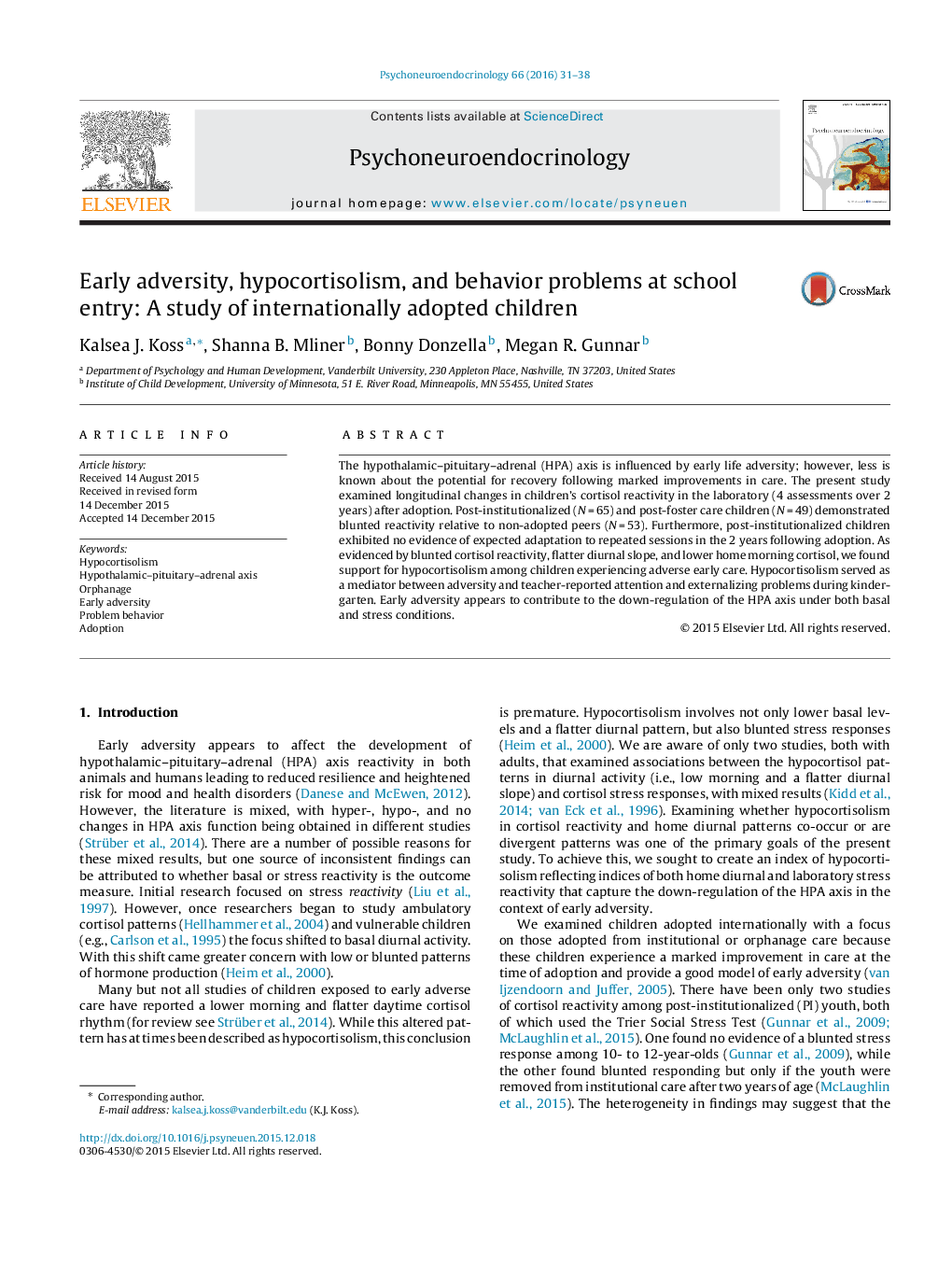| Article ID | Journal | Published Year | Pages | File Type |
|---|---|---|---|---|
| 336308 | Psychoneuroendocrinology | 2016 | 8 Pages |
•Blunted cortisol reactivity to laboratory stressors was observed among post-institutionalized and post-foster care children compared to non-adopted peers.•Post-institutionalized children did not display the expected pattern of adaptation to subsequent laboratory sessions.•Blunted home diurnal cortisol predicted blunted cortisol reactivity supporting the interpretation of these findings as evidence of hypocortisolism.•Hypocortisol served as a mediator between adversity and teacher-reported attention and externalizing problems during kindergarten.
The hypothalamic–pituitary–adrenal (HPA) axis is influenced by early life adversity; however, less is known about the potential for recovery following marked improvements in care. The present study examined longitudinal changes in children’s cortisol reactivity in the laboratory (4 assessments over 2 years) after adoption. Post-institutionalized (N = 65) and post-foster care children (N = 49) demonstrated blunted reactivity relative to non-adopted peers (N = 53). Furthermore, post-institutionalized children exhibited no evidence of expected adaptation to repeated sessions in the 2 years following adoption. As evidenced by blunted cortisol reactivity, flatter diurnal slope, and lower home morning cortisol, we found support for hypocortisolism among children experiencing adverse early care. Hypocortisolism served as a mediator between adversity and teacher-reported attention and externalizing problems during kindergarten. Early adversity appears to contribute to the down-regulation of the HPA axis under both basal and stress conditions.
